Introducing Float.com: A Better Alternative To Spreadsheets
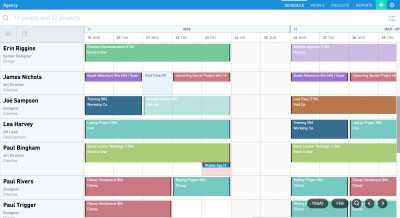
Introducing Float.com: A Better Alternative To Spreadsheets
Introducing Float.com: A Better Alternative To Spreadsheets
Nick Babich
2018-12-11T12:50:00+01:00
2018-12-12T09:19:36+00:00
(This is a sponsored post.) In today’s highly competitive market, it’s vital to move fast. After all, we all know how the famous saying goes: “Time is money.” The faster your product team moves when creating a product, the higher the chance it’ll succeed in the market. If you are a project manager, you need a tool that helps you get the most out of each of your team member’s time.
Though creative teams typically work on new and innovative products, many still use legacy tools to manage their work. Spreadsheets are one of the most common tools in the project manager’s toolbox. While this might be adequate for a team of two or three members, as a team grows, managing the team’s time becomes a demanding job.
Whenever project managers try to manage their team using spreadsheets alone, they usually face the following problems:
1. Lack Of Glanceability
Understanding what’s really happening on a project takes a lot of work. It’s hard to visually grasp who’s busy and who’s not. As a result, some team members might end up overloaded, while others will have too little to do. You also won’t get a clear breakdown of how much time is being devoted to particular work and particular clients, which is crucial not just for billing purposes but also to inform your agency’s future decisions, like who to hire next.
2. Hard To Report To Stakeholders
With spreadsheets as the home of project management, translating data about people and time into tangible insights is a challenge. Data visualization is also virtually impossible with the limited range of chart-building functions that spreadsheet tools provide. As a result, reporting with spreadsheets becomes a time-consuming task. The more people and activities a project has, the more of a project manager’s time will be consumed by reporting.
3. Spreadsheets Manage Tasks, Not People
Managing projects with individual spreadsheets is a disaster waiting to happen. Though a single spreadsheet may give a clear breakdown of a single project, it has no way of indicating overload and underload for particular team members across all projects.
4. Lack Of High-Level Overview Of A Project
It’s well known in the industry that many designers suffer from tunnel vision: Without the big picture of a project in mind, their focus turns to solving ongoing tasks. But the problem of tunnel vision isn’t limited to designers; it also exists in project management.
When a project manager uses a tool like a spreadsheet, it is usually hard (or even impossible) to create a high-level overview of a project. Even when the project manager invests a lot of time in creating this overview, the picture becomes outdated as soon as the company’s direction shifts.
5. The Risk Of Outdated Information
Product development moves quickly, making it a struggle for project managers to continually monitor and introduce all required changes into the spreadsheet. Not only is this time-consuming, but it’s also not much fun — and, as a result, often doesn’t get done.
How Technology Makes Our Life Better: Introducing Float
The purpose of technology has always been to reduce mechanical work in order to focus on innovation. In a creative or product agency, the ultimate goal is to automate as much of the product design and human management process as possible, so that the team can focus on the deep work of creativity and execution.
With this in mind, let’s explore Float, a resource management app for creative agencies. Float makes it easier to understand who’s working on what, becoming a single source of truth for your entire team.
Helping Product Managers Overcome The Challenges Of Time And People Management
Float facilitates team collaboration and makes work more effective. Here’s how:
1. Visual Team Planner: See Team And Tasks At A Glance
Float allows you to plan tasks visually using the “Schedule” tab. In this view, you can allocate and update project assignments. A drag-and-drop interface makes scheduling your team simple.
Here’s an example of the Schedule View:

The schedule is not only a bird’s-eye view of who’s working on what and when, but also a dynamic canvas. Click on any empty space to create a task. Each task can be easily modified, extended or split. (Large preview)
But that’s not all. You can do more:
- Prioritize tasks
You can do this by simply moving them on top of others. - Duplicate tasks
Simply press “Shift” and drag a selected task to a new location.
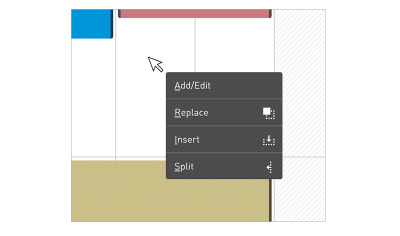
(Large preview)
- Extend a task
If someone on your team needs extra time to finish a task, you can extend the time in one click using the visual interface. - Split a task
When it becomes evident that someone on your team needs help with a task, it’s easy to split the task into parts and assign each part to another member.
2. Built-In Reporting And Statistics
Float’s built-in reporting and statistics feature (“utilization” reports) can save project managers hours of manual work at the end of the week, month or quarter.
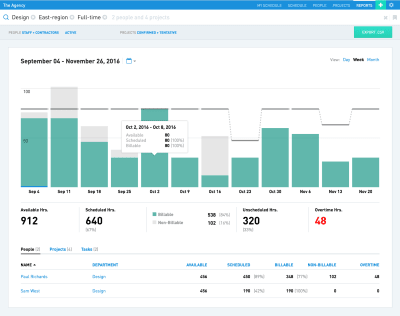
Float helps you keep track of all of a project’s hours. (Large preview)
It’s relatively easy to customize the format of the report. You can:
- Choose the roles of team members (employees, contractors, all) in “People”;
- Choose the type of tasks (tentative, confirmed, completed) in “Task”.
It’s vital to mention that Float allows you to define different roles for team members. For example, if someone works part-time, you can define this in the “Profile” settings and specify that their work is part-time only. This feature also comes handy when you need to calculate a budget.
(Large preview)
You can email team members their individual hours for the week.
3. Search And Filter: All The Information You Need, At Your Fingertips
All of your team’s information sits in one place. You don’t need to use different spreadsheets for different projects; to add a new project, simply click on “Projects” and add a new object.
You can also use the filtering tools to highlight specific projects. A simple way to see relevant tasks at a glance is to filter by tags, leaving only particular types of projects (for example, projects that have contractors).
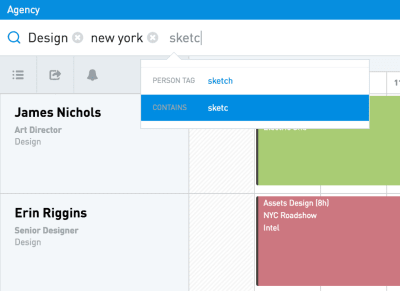
(Large preview)
4. Getting A High-Level Overview Of All Your Projects
With Float, you’ll always have a record of what happened and when.
– Set milestones in a project’s settings, and keep an eye on upcoming milestones in your Activity Feed.
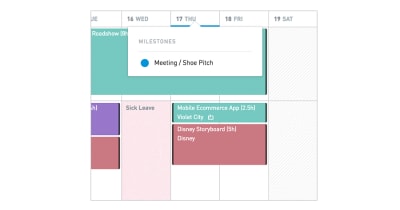
With Float, you can set milestones for your project. (Large preview)
- Drill down into a user or a team and review their schedule. When you see that someone is overscheduled (red will tell you that), you can move other team members to that activity and regroup them.
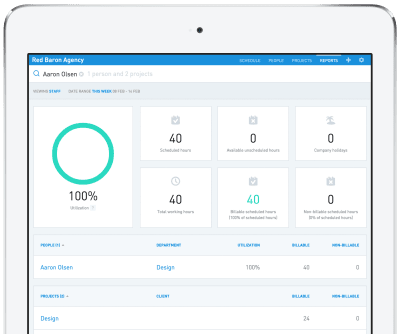
Float helps you keep track of all of a project’s hours. (Large preview)
You can view by day, week or month, making it easy to zoom out and see a big picture of your project.
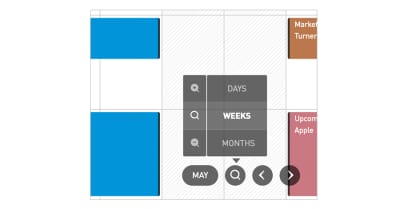
Zoom in for a detailed day view, or zoom out to view a monthly forecast. (Large preview)
5. Reducing The Risk Of Outdated Information
You don’t need to switch between multiple tools to find out everything you need to know. This means your information will be up to date (it’s much easier to manage your project using a single tool, rather than many).
Float can be easily connected to all the services you use.
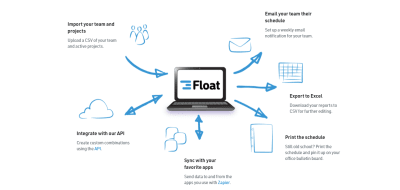
“Schedule”, “People” and “Projects Tools” work together to create context. (Large preview)
Conclusion
If your team’s project management leaves a lot to be desired, Float is a no-brainer. Float makes it easy to see everything you need to know about your team’s projects in a single place, giving project managers the information and functionality they need to handle the fast-paced world of digital design and development. Get started with Float today!
(ms, ra, al, il)
From our sponsors: Introducing Float.com: A Better Alternative To Spreadsheets




